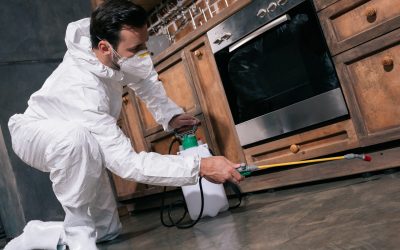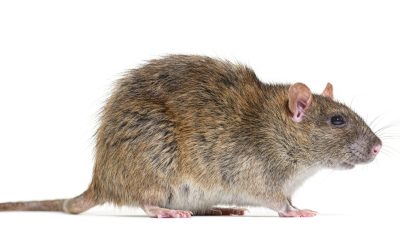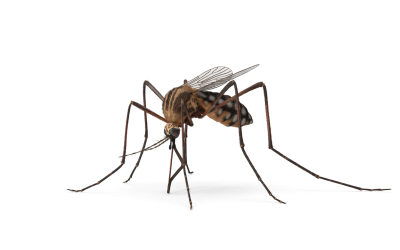If you have had issues with rats occupying your roof, you know how hard it is to eliminate them. These rodents are pesky, chew through insulation and wiring, and carry diseases that can affect humans.
Roof rats feed on house plants and fruits. They eat, contaminate and destroy the plants in your house and patio. Roof rats can also cause damage to electronic equipment such as air conditioners and home appliances.
The secret to keeping the concern of roof rats at bay is to prevent them from entering your premises in the first place, and to achieve this; you need to be knowledgeable about roof rats.
This article covers everything that you need to know about roof rats.
What are Roof Rats?
Roof rats are an introduced species native to Asia but in large numbers across the United States. They typically inhabit commercial buildings where there is easy access to food and water sources for their pups. Rooms or areas that receive copious amounts of natural sunlight tend not to harbor many rats because it’s too warm, but mice will thrive up high with plenty of appropriate food for them (and dine on rat tons).
How do I identify roof rats?
Roof rats are closely related to field mice, but they have longer ears and tails. They can grow up to 4 pounds in weight with similar size points as house mouses (their tail is thicker than the tail of a mouse). Roof rats are usually about 20-25 cm long, with tails about 25-30 cm long. They have grayish-brown fur with blackish bands around their head while their bellies are white.
The hind legs typically measure 5-8 inches compared to 3-4 on their back legs which give them better balance for climbing walls, amongst other things. As adults, males may be distinguished by an extension of fur on their hocks, but not all individuals of either sex have this characteristic.
Habitat of Roof rats
Roof rats are typically found in wall cavities or externally via openings through the roofline. These rats can also make nests on high perches. Some people do find them nesting inside attic vents (along with other pests) without realizing it.
They can occasionally be found in rafters or other spaces high off the ground where they have taken refuge from predators and stored food away from hawks, cats, dogs, etc. They can move freely through the entire building. Different ranges may exhibit different behaviors and court actions.
They tend to climb high in buildings for nesting, especially during cold months or into the seasons when food is scarce, like early Spring and fall (which isn’t that hard considering rodents typically come out of hibernation at this time).
Breeding
Roof rats will breed essentially year-round, although they do not produce pups throughout Spring, instead of having two litters per year. Their breeding period happens between 1 to 3 months immediately after their loathed ground enemies such as field mice and other rodents come out of hibernation.
Each litter comprises 1 to 5 kits that can grow up in a year (however, rats typically live for four years). As babies, the pups aren’t weaned until they’re about six weeks old, which sleeps within households or where predators pose less risk like your cat or even that pesky raccoon.
What Do Roof Rats Eat?
Roof rats can be considered omnivorous as they still feed on various foods, from birds, rodents, and plant life to insects or their beloved host plants.
They have exhibited very atypical foraging patterns that include target-oriented instead of searching far and wide with their noses down into cracks during the day looking for supplies just like pantry snatchers.
They scavenge food on trees and shrubs though liking big chunks of fruits more often than going after grains or dried fruit. Roof rats have been reported consuming insects that include grasshoppers, tortoise beetles, termites mice, snails, snakes, birds, bats, rabbits, ground-nesting birds, and domestic birds, among other general insects.
What are the signs of a roof rat infestation?
Some signs of a roof rat infestation are:
- Scratching noises from the roof when no one is around
- Food smells coming from the ceiling and/or siding
- Damage to sheathing and fascia boards as well as damage from chewing holes into the roof covering wall cavities
- Footprints or running tracks on the roof
Are roof rats dangerous?
Yes, roof rats can pose a danger to your household pets or, even worse personal property like china figurines and wooden boxes. They can cause severe damage to your home or possessions by chewing through electrical wires, destroying insulation, and causing structural damage. Furthermore, roof rats can carry diseases such as fleas and ticks that can be transmitted to humans.
It is best if you suspect there are any signs of an infestation in the roof space. It’s suggested that you contact someone for professional pest control instead of using any DIY roof rat removal techniques.
How to Get Rid of Roof Rats?
The first step is to inspect your roof regularly and look for obvious signs of infestation, such as small holes making it into the ceiling or damage from chewing. You can seal any gaps with a caulk that is non-toxic and won’t be able to tolerate the roof rats without breaking them back open.
Do Roof Rats make nests in walls or ceilings?
Yes, yes, they do! As per the studies done by wildlife biologists, roof rats like to make their nests in various places around your house. Instead, they would prefer close to or directly above where you build because moisture retention inside the walls facilitates them sleeping comfortably at night.
How do roof rats enter my home?
Roof rats can enter your house through small holes, whether a skylight, chimney, or even gaps between the foundation wall. After entering your home, roof rats will work their way around the house, and rather than leaving through a customary exit point they prefer to choose other convenient ones that enable them access from one floor below or from outside.
Can I Eliminate Roof Rats Myself?
Whether you will be successful in eradicating roof rat infestation depends on how severe the infestation is. Like all the rodent species, Roof rats are intelligent and tend to bypass traps and continue finding ways to your house quickly. If you do not have the time and the technical know-how, we recommend hiring a professional exterminator.
No matter how hard you try to ignore a roof rat infestation, they can be tricky to get rid of with some strange activity going on in your kitchen or vicinity. Once a roof rat infestation has begun affecting your property, they can be seen going around in groups traveling from one place to the next.
Roof rats are the most common type of rat in the United States. They can be a major problem for homeowners, especially if they are allowed to reproduce unchecked. The best way to deal with roof rats is to get rid of them as soon as possible. Contact an exterminator immediately if you notice any of these signs on your property or around your house! You need to understand what roof rat is and how you can remove them from your property.





0 Comments